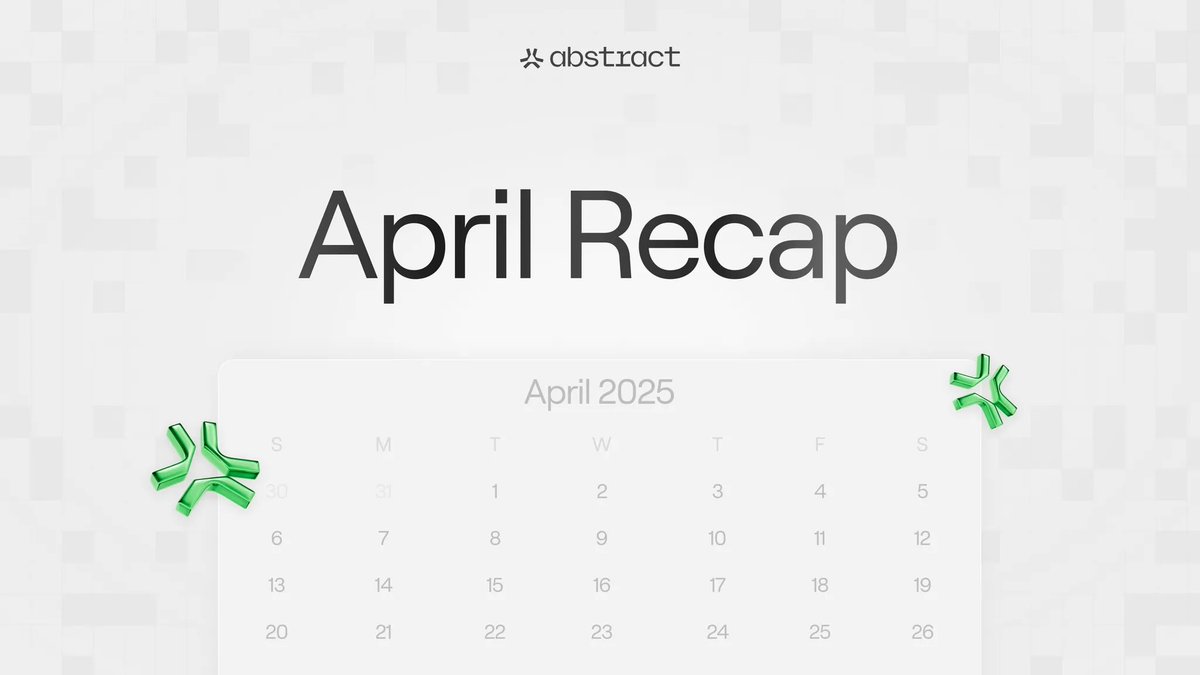This token isn’t available on the OKX Exchange. You can trade it on OKX DEX instead.

OMNI
Omni price

ALeDEy...Fk9k
$0.000091700
-$0.00051
(-84.85%)
Price change for the last 24 hours

How are you feeling about OMNI today?
Share your sentiments here by giving a thumbs up if you’re feeling bullish about the coin or a thumbs down if you’re feeling bearish.
Vote to view results
OMNI market info
Market cap
Market cap is calculated by multiplying the circulating supply of a coin with its latest price.
Market cap = Circulating supply × Last price
Market cap = Circulating supply × Last price
Network
Underlying blockchain that supports secure, decentralized transactions.
Circulating supply
Total amount of a coin that is publicly available on the market.
Liquidity
Liquidity is the ease of buying/selling a coin on DEX. The higher the liquidity, the easier it is to complete a transaction.
Market cap
$916,999.03
Network
Solana
Circulating supply
9,999,999,999 OMNI
Token holders
207
Liquidity
$22,972.36
1h volume
$1.51M
4h volume
$1.51M
24h volume
$1.51M
Omni Feed
The following content is sourced from .

Lux(λ) |光尘|空灵|GEB
#Bitcoin's cryptocurrencies include three broad categories of formal systems
- 1, Decentralization brought about by individual sovereignty. (UTXO model)
- 2, P/NP asymmetric solution and verification of the resulting perceptual reality. (POW model)
- 3, Trust the transparency of the code. (Blockchain technology).
EOS/Ethereum only focuses on Blockchain technology, so it leads to centralized trust in the people behind the rules behind the deployment code, so that the system has its own security vulnerabilities, and the product is hacked because the person deploying the code has no motivation to actively hack or whether they have the ability to write code to defend against hacker attacks. Furthermore, both of these have lost the perceived reality module of P/NP, and the physical objects of the external world cannot be safely Orcacl from the consensus level to the blockchain, and the blockchain cannot understand reality.
There are a series of public chain projects behind it, which more or less have implemented one of the three major categories of technologies of #Bitcoin.
For example, #ADA and #SUI use the derived UTXO data structure respectively, and the Object structure realizes the decentralization brought by individual sovereignty. However, the reality perception of P/NP is not considered at all, so the system still cannot achieve mutual perception and landing with reality.
For example, bittensor is doing linear perception of reality through consensus, but it does not use P/NP nonlinear technology to perceive reality, and it cannot achieve emergent results.
Why hasn't the cryptocurrency industry made anything like #Bitcoin for so long in #Bitcoin?
Here's why: no one understands #Bitcoin.
Each project can achieve a lot of results after learning only one and a half tricks of #Bitcoin.
And the narrative that we really want to do should go back to the complex adaptive technology that #Bitcoin has emerged by combining three types of formal systems. That's how we can make a cryptocurrency that is comparable to #Bitcoin.
This is the industry's real 0-to-1 innovation. Rather than letting the entire industry narrative stagnate on the local technology of various fork #Bitcoin.

Lux(λ) |光尘|空灵|GEB
Research on Bitcoin scaling technology based on complex adaptive system theory
Since its inception, Bitcoin's scalability has been a key challenge to its large-scale adoption. Based on a deep understanding of Bitcoin as a Complex Adaptive System (CAS), this paper discusses four possible future technical expansion directions of the Bitcoin network from its core components. We believe that Bitcoin is a CAS made up of three interacting formal subsystems:
Individual sovereignty subsystem: With a 1:1 digital state and individual self-mapping as the core, it is embodied in the Unspent Transaction Output (UTXO) model in Bitcoin. Each UTXO represents independent asset ownership and control for a specific user.
P/NP Reality-Aware Subsystem: Implemented through asymmetric computational puzzles (P-problems) and easy-to-verify solutions (NP problems), Bitcoin's Proof-of-Work (PoW) mechanism is at its core. PoW enables machines to perceive and record the objective reality of transactions in a decentralized manner, maintaining the consistency of the ledger.
Consensus intermediary subsystem of trust code: As an open and transparent distributed ledger, blockchain provides a notarization and execution environment without trusting a third party through preset code rules and consensus mechanisms, ensuring the transparency and immutability of transactions and data.
Based on the above understanding of the essence of Bitcoin CAS, we can systematically sort out the following four main directions of technology expansion:
1. UTXO-based individual sovereign application extensions
Bitcoin's UTXO model exhibits unique advantages in asset management, such as clear ownership and a high degree of privacy. The existing BRC-20 and Omni Layer protocols are the first attempts to issue and manage assets on Bitcoin based on the UTXO mechanism. However, the potential of UTXOs goes far beyond that.
Scientific logic: At its core, UTXO lies in its explicit state ownership and atomic state transition. This feature is highly compatible with the needs of use cases such as Decentralized Identity (DID). Mapping the various attributes and credentials of DIDs into a UTXO-like structure allows users to have full autonomy over and manage their digital identity. Every update of identity information or transfer of credentials can be regarded as a state transfer of UTXO, thus ensuring the immutability and traceability of identity data.
Technology Path: This requires extending the existing UTXO structure to allow richer metadata to be stored in a single "UTXO" and designing new transaction types to support the updating and management of DID-related states. At the same time, incorporating Layer 2 technology can improve the efficiency and scalability of such applications.
2. Horizontal scaling based on P/NP perceptual reality
Bitcoin's PoW mechanism successfully achieves decentralized consensus and an objective record of transaction history. However, the potential of PoW can go beyond its application in the cryptocurrency space and allow for a broader "reality perception" to scale horizontally to serve the real economy.
Scientific Logic: The essence of PoW is to anchor real-world workloads or resources by consuming verifiable computing resources. Drawing on this idea, various mechanisms for "Proof of Physical Resource/Work" can be designed. Verifying the existence, state, or workload of specific resources (e.g., storage, bandwidth, energy) in the physical world through cryptography can provide credible proofs for decentralized cloud computing, Internet of Things, energy management, and more. In addition, PoW-based verifiable computation can ensure the correctness of distributed computing tasks and the reliability of results.
Technology Path: This requires interdisciplinary collaboration, combining knowledge from cryptography, physics, engineering, and other fields to design proof mechanisms that can reliably map the properties and behaviors of the physical world to the digital world.
3. The continuous evolution and application deepening of Blockchain technology
As the cornerstone of Bitcoin, blockchain technology has been widely recognized for its advantages in transparency and trustworthiness, and has been successfully applied in areas such as decentralized finance (DeFi). While the underlying technology is maturing, its development is far from stopping.
Scientific logic: Through the cryptographic hash chain and consensus mechanism, the blockchain ensures the non-tampering of transaction data and the non-repudiation of history, so as to build a transparent and credible value transfer and information recording network. The success of DeFi is precisely to take advantage of the transparency of blockchain, reducing the information asymmetry and intermediary risk in the traditional financial system.
Technology Path: Future development will focus on improving blockchain scalability (e.g., Layer 2 technology, sharding), interoperability (cross-chain protocol), privacy protection (zero-knowledge proof, homomorphic encryption), and modular design to meet the needs of more complex application scenarios.
Fourth, the construction of an innovative decentralized system based on the Bitcoin CAS model
We believe that Bitcoin's most valuable legacy is not a single technological breakthrough, but rather its clever integration of individual sovereignty, decentralized consensus, and transparent rules into a robust and adaptive system architecture. Learning from Bitcoin's CAS design ideas and applying them to build a new decentralized system is the most promising development direction in the future.
Scientific logic: Bitcoin's success lies in the synergy between its various subsystems, which together maintain the stability and security of the network. Drawing on this systematic design thinking, we can design a new decentralized system with similar core characteristics for different application scenarios. For example, decentralized social networks can borrow from UTXO's ownership model and PoW-like content governance mechanisms; New DAOs can leverage UTXOs for more granular governance and incentive design; A decentralized supply chain management system can learn from UTXO's traceability capabilities and "physical proof-of-work" authenticity verification.
Technical Path: This requires us to deeply understand the core design principles of Bitcoin CAS and abstract and generalize them for application in different domains. This involves innovative thinking and design of specific implementations of individual sovereignty, decentralized consensus, and transparent rules.
conclusion
The expansion of Bitcoin should not only be limited to tinkering with and optimizing its existing technology, but also need to understand the internal logic and interaction of its core components from its essence as a complex adaptive system. By in-depth research and learning from Bitcoin's innovative solutions in individual sovereignty, reality perception and trust consensus, and applying its systematic design ideas to a wider range of fields, we are expected to open up more potential and disruptive decentralized application prospects, and truly integrate blockchain and cryptocurrency technology into the broader digital economy and social life. We call on academia and industry to pay attention to the in-depth study of the Bitcoin CAS model and actively explore innovative solutions based on this framework.
3.96K
0

Lux(λ) |光尘|空灵|GEB
#BTC is not a virtual currency, but a physical landing currency. But only blockchain-based cryptocurrencies are virtual currencies.
Blockchain does not solve the problem of decentralization, only the problem of transparency of trust code. The solution to the decentralization problem is: UTXO-like mapping of digital states, individual sovereignty, human-computer interaction, and the perceived reality of distributed P/NP models.

Lux(λ) |光尘|空灵|GEB
Expand #Bitcoin's 4 technical directions.
For 10 years, we've been thinking about how to expand the #Bitcoin network. As the knowledge becomes more and more profound, we know the technical direction of the expansion #Bitcoin more comprehensively.
If you want to extend #Bitcoin, you must first understand what #Bitcoin is.
#Bitcoin is a CAS (Complex Adaptive System) consisting of three types of formal subsystems.
The three types of sub-formal systems are:
- 1,Individual sovereignty, 1:1 digital state and individual self-mapping. (i.e. UTXO in Bitcoin)
- 2, P/NP Perceptual Reality, Asymmetric Solving and Verification of Machine Understanding Perceiving Natural Reality. (i.e. POW in Bitcoin)
- 3, Trust code consensus intermediary, notarization and execution environment based on code consensus. (i.e. Blockchain in Bitcoin)
Based on the above understanding of #Bitcoin, we can have 4 major directions to expand #Bitcoin technology.
The first block: UTXO-like individual sovereignty to extend applications, typical of the BRC20 or OmniLayer protocols that have been done, but limited to assets, we can try to extend to various new applications such as DID
The second block: the expansion of the P/NP perceptual reality subsystem, such as BTC's POW mining pool protocol is such a scaling technology, but this is only a vertical expansion based on BTC POW, we can explore the horizontal expansion based on P/NP, so as to promote the reality of cryptocurrency technology to serve the real economy.
The third block: Blockchain technology, which is the most resource-rich exploration direction for the entire cryptocurrency, and it is also the most fully explored technology. Technically, it's basically transparent. Blockchain solves the problem of trusting code rules for transparency. So in doing Defi related fields, compared to traditional finance, there is an increase in transparency.
The fourth block: is also the largest one, that is, referring to Bitcoin's CAS technology solution, that is, the direction of the above 3 blocks, learning Bitcoin's CAS technology, and integrating into new CAS products similar to Bitcoin. This is the biggest track with the most potential. It's also the track we've always neglected the most, because we've always been stuck in a local thinking glitch.
623
0

Lux(λ) |光尘|空灵|GEB
Expand #Bitcoin's 4 technical directions.
For 10 years, we've been thinking about how to expand the #Bitcoin network. As the knowledge becomes more and more profound, we know the technical direction of the expansion #Bitcoin more comprehensively.
If you want to extend #Bitcoin, you must first understand what #Bitcoin is.
#Bitcoin is a CAS (Complex Adaptive System) consisting of three types of formal subsystems.
The three types of sub-formal systems are:
- 1,Individual sovereignty, 1:1 digital state and individual self-mapping. (i.e. UTXO in Bitcoin)
- 2, P/NP Perceptual Reality, Asymmetric Solving and Verification of Machine Understanding Perceiving Natural Reality. (i.e. POW in Bitcoin)
- 3, Trust code consensus intermediary, notarization and execution environment based on code consensus. (i.e. Blockchain in Bitcoin)
Based on the above understanding of #Bitcoin, we can have 4 major directions to expand #Bitcoin technology.
The first block: UTXO-like individual sovereignty to extend applications, typical of the BRC20 or OmniLayer protocols that have been done, but limited to assets, we can try to extend to various new applications such as DID
The second block: the expansion of the P/NP perceptual reality subsystem, such as BTC's POW mining pool protocol is such a scaling technology, but this is only a vertical expansion based on BTC POW, we can explore the horizontal expansion based on P/NP, so as to promote the reality of cryptocurrency technology to serve the real economy.
The third block: Blockchain technology, which is the most resource-rich exploration direction for the entire cryptocurrency, and it is also the most fully explored technology. Technically, it's basically transparent. Blockchain solves the problem of trusting code rules for transparency. So in doing Defi related fields, compared to traditional finance, there is an increase in transparency.
The fourth block: is also the largest one, that is, referring to Bitcoin's CAS technology solution, that is, the direction of the above 3 blocks, learning Bitcoin's CAS technology, and integrating into new CAS products similar to Bitcoin. This is the biggest track with the most potential. It's also the track we've always neglected the most, because we've always been stuck in a local thinking glitch.

Lux(λ) |光尘|空灵|GEB
Blockchain solves the transparency problem by not solving the decentralization problem, but only the transfer of trust (the rules behind the trusting person to the trust code).
And the rules behind the trust code of most blockchain technologies lie in the hands of the designers of the centralized code.
And Satoshi Nakamoto's design of the rules behind the trust code is:
- 1:1 Human-Computer Interaction Data State Structure (UTXO Model) for Individual Sovereignty Mapping
- Distributed POW calculation model for P/NP.
The distributed POW computing model of P/NP undertakes the notarization of rights.
The model of individual sovereignty UTXO assumes the attribution of self-rights, i.e., decentralization.
And these two are the convergence of decentralized solutions behind the blockchain.
719
0
OMNI price performance in USD
The current price of omni is $0.000091700. Over the last 24 hours, omni has decreased by -84.85%. It currently has a circulating supply of 9,999,999,999 OMNI and a maximum supply of 9,999,999,999 OMNI, giving it a fully diluted market cap of $916,999.03. The omni/USD price is updated in real-time.
5m
-62.28%
1h
-84.85%
4h
-84.85%
24h
-84.85%
About Omni (OMNI)
OMNI FAQ
What’s the current price of Omni?
The current price of 1 OMNI is $0.000091700, experiencing a -84.85% change in the past 24 hours.
Can I buy OMNI on OKX?
No, currently OMNI is unavailable on OKX. To stay updated on when OMNI becomes available, sign up for notifications or follow us on social media. We’ll announce new cryptocurrency additions as soon as they’re listed.
Why does the price of OMNI fluctuate?
The price of OMNI fluctuates due to the global supply and demand dynamics typical of cryptocurrencies. Its short-term volatility can be attributed to significant shifts in these market forces.
How much is 1 Omni worth today?
Currently, one Omni is worth $0.000091700. For answers and insight into Omni's price action, you're in the right place. Explore the latest Omni charts and trade responsibly with OKX.
What is cryptocurrency?
Cryptocurrencies, such as Omni, are digital assets that operate on a public ledger called blockchains. Learn more about coins and tokens offered on OKX and their different attributes, which includes live prices and real-time charts.
When was cryptocurrency invented?
Thanks to the 2008 financial crisis, interest in decentralized finance boomed. Bitcoin offered a novel solution by being a secure digital asset on a decentralized network. Since then, many other tokens such as Omni have been created as well.
Monitor crypto prices on an exchange
Watch this video to learn about what happens when you move your money to a crypto exchange.
Disclaimer
The social content on this page ("Content"), including but not limited to tweets and statistics provided by LunarCrush, is sourced from third parties and provided "as is" for informational purposes only. OKX does not guarantee the quality or accuracy of the Content, and the Content does not represent the views of OKX. It is not intended to provide (i) investment advice or recommendation; (ii) an offer or solicitation to buy, sell or hold digital assets; or (iii) financial, accounting, legal or tax advice. Digital assets, including stablecoins and NFTs, involve a high degree of risk, can fluctuate greatly. The price and performance of the digital assets are not guaranteed and may change without notice.
OKX does not provide investment or asset recommendations. You should carefully consider whether trading or holding digital assets is suitable for you in light of your financial condition. Please consult your legal/tax/investment professional for questions about your specific circumstances. For further details, please refer to our Terms of Use and Risk Warning. By using the third-party website ("TPW"), you accept that any use of the TPW will be subject to and governed by the terms of the TPW. Unless expressly stated in writing, OKX and its affiliates (“OKX”) are not in any way associated with the owner or operator of the TPW. You agree that OKX is not responsible or liable for any loss, damage and any other consequences arising from your use of the TPW. Please be aware that using a TPW may result in a loss or diminution of your assets. Product may not be available in all jurisdictions.
OKX does not provide investment or asset recommendations. You should carefully consider whether trading or holding digital assets is suitable for you in light of your financial condition. Please consult your legal/tax/investment professional for questions about your specific circumstances. For further details, please refer to our Terms of Use and Risk Warning. By using the third-party website ("TPW"), you accept that any use of the TPW will be subject to and governed by the terms of the TPW. Unless expressly stated in writing, OKX and its affiliates (“OKX”) are not in any way associated with the owner or operator of the TPW. You agree that OKX is not responsible or liable for any loss, damage and any other consequences arising from your use of the TPW. Please be aware that using a TPW may result in a loss or diminution of your assets. Product may not be available in all jurisdictions.

































Socials